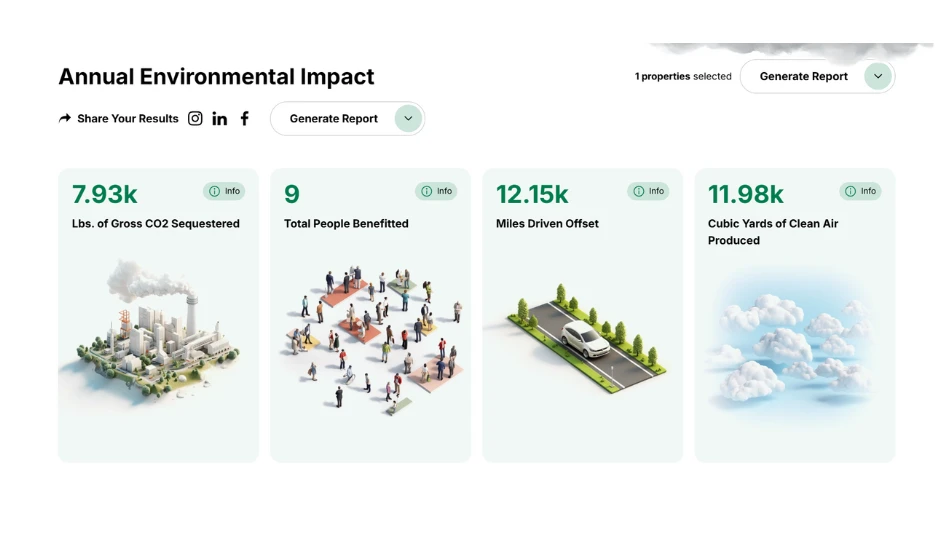Most human beings are sick only occasionally, if they are lucky, and we should expect most of our lawns and grounds to be healthy too. Most people know the basic steps needed to keep themselves healthy good nutrition, exercise, adequate rest, not too much stress but turfgrass disease can seem to strike its victims without warning. Part of the problem is that many lawn and landscape contractors do not get to visit their properties daily, and diseases can strike quickly. As with human health, prevention is best. When problems do arise, an accurate diagnosis can lead to the proper management choices.
STEP 1. Start right.
Too often, contractors and homeowners hope to save
money on a new lawn by putting a minimal layer of topsoil over a hard packed construction site. Good drainage and
optimal oxygen to the root system is the basis of good turfgrass health. No amount of fertilizer, water or
fungicides can overcome turf growing in shallow, compacted soil.
One of the most destructive turfgrass diseases is necrotic ring spot. This disease commonly develops three to four years after Kentucky bluegrass sod or seed is established on poor sites. As a root disease, it is difficult to treat with fungicides. Necrotic ring spot and other diseases that occur on slow growing and stressed turf will be diminished by an improved environment for root growth provided by aeration and thatch management.
Next in importance to a good growing environment for the roots are good air movement and sunlight on the leaf blades. The fungi that cause many important diseases begin to grow in the water droplets on the leaf blades. Landscaping should be planned to allow for good air movement. As landscape plants mature, dense plantings should be thinned and trees should be pruned to allow adequate sunlight penetration. This will also enhance air movement, so grass will dry off quickly after rain and nightly dews.
Third, turfgrass breeding programs have developed many new cultivars of lawn species with significant genetic resistance to major turfgrass diseases. If you are establishing a new turf area, seek advice from local extension specialists about which cultivars will perform best in your local conditions. If you find a chronic disease problem in an older established site, consider overseeding or reestablishing with improved disease-tolerant cultivars.
STEP 2. Water the turf, but not the pathogens.
The cultural practices of
proper irrigation, fertilizer applications and mowing are basic to all turf maintenance, but they really have two
goals. The first goal is to keep the grass plants healthy and as stress-free as possible. The second goal is to
minimize the opportunities diseases have to proliferate.
Fungi cause nearly all turfgrass diseases. Fungi are comprised of microscopic filaments, called hyphae or mycelium, that eat and grow. Some fungi are specialized plant parasites that invade plants and use plant tissues as a source of food. When these fungi multiply quickly and overwhelm the turf, they become disease-causing pathogens.
It is common to see the fragile fungal hyphae appear similar to spider webs on grass in the morning dew. They dry up and disappear as the dew evaporates. Most fungi produce spores for dispersal and as survival structures. Like seeds, spores must absorb water before they can germinate into new mycelium that will invade the turf and initiate diseases.
This leaves turf managers with a dilemma. The turfgrass plants themselves need water in the root zone to be healthy, but it is difficult to deliver this water without wetting the leaf blades where most fungal diseases begin. Water should be applied infrequently and deeply. It should also be applied when the leaf blades will have a chance to dry off quickly. That means not irrigating in the late afternoon and evening because the grass will stay wet into the night dew period. Turf should also not be irrigated just as it is drying off in the morning.
If water puddles around a poorly maintained sprinkler head, disease may develop even where expensive automated irrigation systems are available. Turf’s water needs also vary from month to month and even week to week. A soil probe or a shovel can be used to determine if enough water is reaching the root zone for good plant growth. Foggy, cloudy weather can be misleading, making it seem as if the plants are getting enough water in the soil when only the leaves are wet. This results in a severe disease potential because the fungi on the leaf blades have optimal conditions for growth, but the plants are growing slowly due to insufficient water. Rust, red thread and dollar spot are common diseases that occur under such conditions.
An Accurate Diagnosis |
When disease diagnosis is difficult, know where you can find professional diagnostic help. Turf samples should be in the early stages of disease, and be large enough to show a variety of symptoms generally a square sample 4 to 6 inches wide with at least 1 inch of soil and roots below the thatch is adequate. Provide the lab with detailed information about the sample, such as the grass species, environment and site conditions (temperature, rainfall, soil, recent fertilizers and pesticides) and probable causes (compaction, poor watering, improper mowing, dense landscaping). - Gail Schumann |
STEP 3. Avoid the nitrogen roller coaster.
A steady and balanced supply of
necessary nutrients will help keep turfgrass healthy, but no nutrient is more important than nitrogen. Excess
nitrogen makes turfgrass blades soft and succulent and can increase diseases such as brown patch, Pythium blight
and leaf spots. Slow growing, nitrogen-deficient turf can become diseased because it cannot "outgrow"
certain fungi, resulting in increased dollar spot, red thread and rust. Late season fertilization, which delays
turf dormancy, will enhance the possibility of snow mold problems in winter.
Large monthly applications of quick release nitrogen sources can set turf up for the disease roller coaster when combined with poor watering practices or rainy weather. High nitrogen diseases may occur right after the application, and low nitrogen diseases may develop in the weeks before the next scheduled application.
Synthetic and natural slow release nitrogen sources should be the basis of a healthy turfgrass maintenance program with small amounts of quick release nitrogen applied as needed to optimize growth and to minimize disease. Excess nitrogen in the spring is likely to result in leaf spot and melting-out, especially when accompanied by wet weather. Excess nitrogen in hot, humid weather may increase the severity of brown patch and Pythium blight.
STEP 4. Know your enemies.
Some common diseases show symptoms that are
readily recognized even without a microscope; others can be diagnosed accurately only in a laboratory. When a
turfgrass disease does not easily match up with the pictures in a book, other possible causes of turf problems need
to be considered. Mowing injury, insect problems or misapplication of fertilizers and pesticides can all cause
symptoms that might be similar to disease symptoms.
Remember the "disease triangle" when trying to make a diagnosis. The triangle is a reminder that disease occurs only when three factors are present: a pathogen, a susceptible plant and an environment favorable for the disease. Contractors must know what turf species are present at the site because diseases can be specific to the type of grass they infect. For example, necrotic ring spot is a problem in Kentucky bluegrass but not in perennial ryegrass.
Several common turf diseases are easily recognized by the colored mycelium and spores. In cool, wet weather, the fungus responsible for red thread disease produces tiny red threads growing from the tips of the leaf blades. The same fungus produces tiny, cotton candy-like pink spores. These spores are sometimes visible even when the red threads are not obvious.
Rust is another common disease that is easily identified by its color. White athletic shoes may become covered with the orange, powdery spores during severe outbreaks, usually in late summer and fall in the northern half of the United States.
Several common turfgrass pathogens produce white mycelium on wet grass, especially in the early morning. The mycelium is very similar to spider webs. The two most common diseases associated with white mycelium are dollar spot and Pythium blight. Dollar spot typically occurs in warm, wet weather on low fertility turf. Infected leaf blades are often straw-colored below the mycelium. Pythium blight generally occurs in hot, wet weather on high fertility turf. Infected leaf blades look greasy. Powdery mildew is also white and commonly seen on turf growing in shady areas.
The third point of the disease triangle is the environment. Many fungi have a temperature preference, so we expect certain diseases whenever an extended period of cool, warm or hot weather occurs, especially when accompanied by excess moisture. In cool weather, expect leaf spot and red thread. As weather gets warmer, dollar spot and necrotic ring spot may develop. In hot weather, brown patch and Pythium blight are more likely.
STEP 5. Correct medicines for turf diseases.
Fungicides are a useful way to control diseases, but effective use of these products depends on an accurate
diagnosis and proper timing. Many turf diseases develop during unusual weather conditions that are only temporary.
Once the weather pattern changes, the disease may no longer pose a serious threat to the health of the turf.
Fungicides will not bring dead turfgrass back to life, however. Overseeding damaged areas and correcting faulty
irrigation or mowing practices are also effective solutions to keeping turf healthy and helping it to recover after
a disease strikes.
Fungicides differ from each other in the way they prevent disease. For example, chlorothalonil-based products such as Daconil stick to the sides of grass blades and fend off disease outside the plant. Propiconazole-based products, such as Banner MAXX, enter the grass plant and provide some systemic activity.
Always check labels for changes and updates to fungicide products.
Azoxystrobin, sold under the trade name Heritage, was first sold as a fungicide for golf courses in 1997. It offers broad spectrum control of many important turfgrass diseases and may be available for lawn use in the near future. Other fungicides give excellent control of a smaller list of diseases. For example, flutolanil (ProStar) gives excellent control of red thread, brown patch and Typhula blight (gray snow mold). Neither azoxystrobin nor flutolanil control dollar spot, so it is important to determine which diseases require treatment before choosing a fungicide.
Many people are excited about new biological controls for turfgrass. Several insect biocontrols are already available, but disease biocontrol is in its infancy. Before purchasing disease biocontrol products, ask for independent university research proving safety and efficacy of the product. If you try a new product, leave an area untreated to determine if the product worked or if the disease went away by itself as they often do.
The author is Associate Professor of Plant Pathology at the University of Massachusetts, Amherst.

Explore the April 1998 Issue
Check out more from this issue and find your next story to read.
Latest from Lawn & Landscape
- Bartlett Tree Experts gave away 50,000 tree seedlings for Arbor Day
- Connect, Control & Conserve with Horizon Technical Services
- Use Horizon's Parts Hotline
- How I built a Top 100 company
- Horizon’s Exclusive TurfGro Fertilizer
- Grow your business with mosquito control
- LandCare adds 2 branches in SoCal, promotes Aleman to branch manager
- Spray them away






